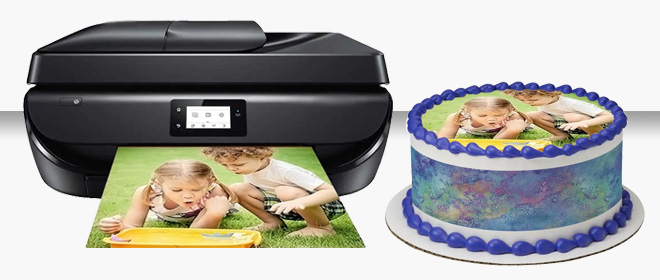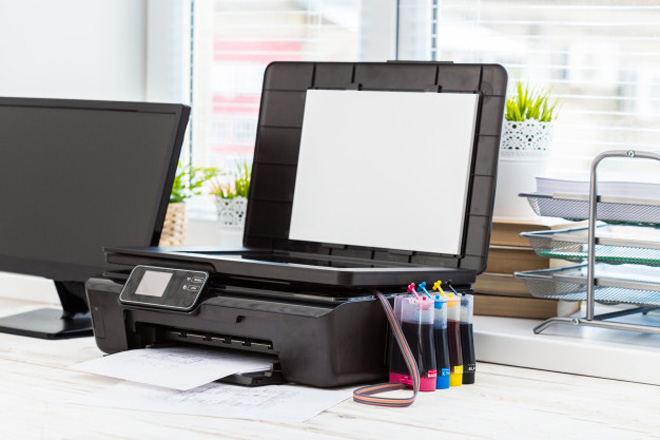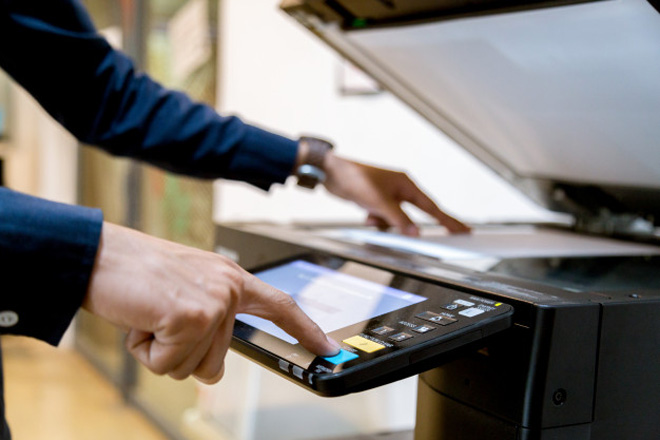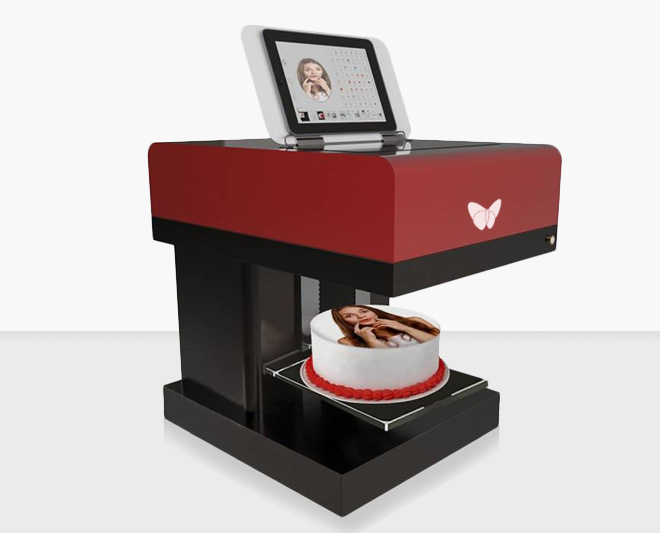
We've all had a nasty ink spillage experience in our lives; we know some can be messier than others. Even that ballpoint pen could wreak havoc on your clothes. Some of that ink inevitably ends up on your hands or skin. But what are the chances of it being toxic? There's a complicated stigma between ink cartridges when it comes to their toxicity level. They cannot even be put in your blue recycling bin, but they can be recycled at specialized recycling centers. But does that mean the ink within the cartridge is toxic?
This all stems from misinformation that has been spread around for decades now. Is the printer ink we use today as harmful and detrimental to our health as the ink used in the past? Is it possible that it's toxic? You never really ask yourself if printer ink is toxic until a spill occurs. This article will put your fear to rest; we're here to give you the facts about ink, toner, and even the edible ink and the toxicity related to other ink products.

Inkjet Printers
Inkjet printers are arguably the most common type of printer you'll find in a home setting. Inkjet printers use ink cartridges as their main consumable. The ink you find in modern-day ink cartridges is mostly non-toxic, meaning it will not pose a health risk to humans if accidentally exposed to the liquid. The main components found in ordinary ink includes water, alcohol, and ethylene; all which confect into a relatively harmless concoction.
But what if you get the ink on your skin? Luckily, getting printer ink on your skin is equivalent to spilling ink from a pen on yourself. Besides a blue stain for a couple of days, if you don't wash it off immediately, there is no real danger in getting ink on your skin.
Just because printer ink is non-toxic, it doesn't mean you should ingest it, and it's always a good practice to keep it out of reach of small children. This goes for adults too - as appealing as the colors look, please don't eat it. However, if you do somehow end up ingesting printer ink, the good news is that it is most likely non-life-threatening.
If you really want to get into specifics of your ink cartridge, most manufacturers include a Material Safety Data Sheet that can be accessed directly from their website. This document has all of the information that you need regarding the composition of their specific products. The Material Safety Data Sheet also includes special instructions regarding safety protocols in the unlikely event of human consumption.

Laser Printers
The main difference between inkjet printers and laser printers is their main consumable cartridge. Laser printers use toner powder contained inside the toner cartridge as the main method of page transfer. Toner powder is very different from printer ink, and its toxicity differs as well.
While not as common as an ink spill, having a toner cartridge spill is a very possible and extremely messy situation. Broken toner cartridges can leave you with toner powder being spread throughout your home. Luckily, skin irritation from toner powder is highly unlikely.
The main concern about the toxicity of toner powder is the respiratory effects that it may have on the lungs if accidentally inhaled. Toner powder contains trace amounts of Carbon Black, a carcinogen that can cause damage to the lungs if inhaled in large quantities over a prolonged period of time. Luckily, a single toner cartridge does not contain anywhere near the detrimental amount of Carbon black to cause any severe health problems

FDA Approved Edible Ink?
Is there really an ink out there that is edible? Surprisingly yes, you might have run into it a time or two. We're talking about edible ink cartridges; you've probably seen them on cakes at specialized bakeries or even at your local grocery store. They are specialized cartridges with its inside contents that are intended to be eaten.
But what's so edible about them? Well, calling it an "ink cartridge" it's a bit of a misnomer. It's really just clever usage of food dye combined with the precise ingenuity of an inkjet printer.
These specialty printers either print on edible paper, frosting sheets, or directly on the cake, depending on which "edible printer" you have. Edible ink is FDA compliant and has passed all of its food and safety regulations, so there are no worries about it being toxic. This is the only ink intended to be consumed on this list and probably the tastiest too.
Conclusion
It's probably a relief to know that printer ink is no more harmful than a ballpoint pen. An ink spill is more of an annoyance than a potential safety hazard. Using your common sense when navigating through an ink spill is all you really need.
If all fails, you can always consult the Material Safety Data Sheet, which is usually found within the packaging or on the respective manufacturer's website. This datasheet will give you ample knowledge of the product, including all of the active ingredients used, as well as safety instructions for the rare case of an ink-related emergency.
If ink spills have recently gotten in your way, consider finding a high-quality replacement ink cartridge. 1ink.com has been a leader in the industry for over 20 years, providing top of the line discount ink and toner supplies to individuals and businesses alike. With a wide variety of stock for the most popular printer model, we have the ink supply to suit your specific printer. We carry affordable replacement cartridges to fit any printer, including Canon ink, HP, Epson, Brother, and many more. Be sure to comb through our websites for extra saving coupons for our already discounted ink cartridges.
